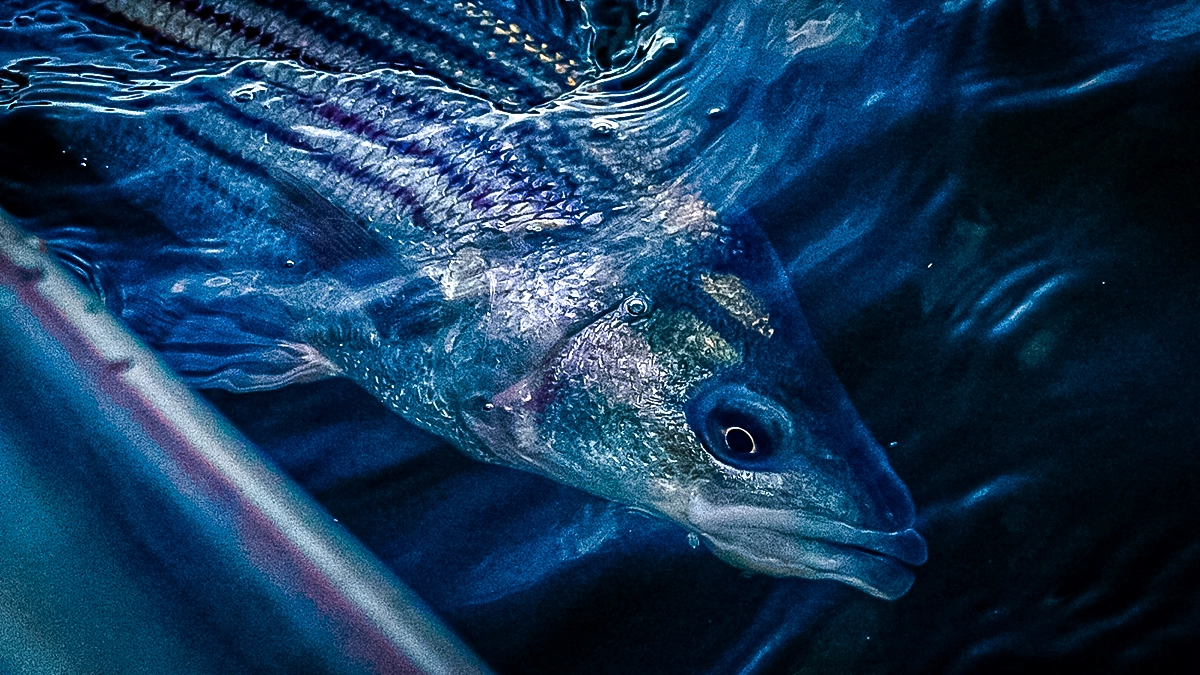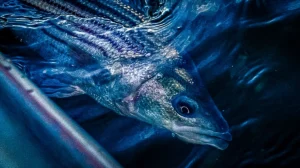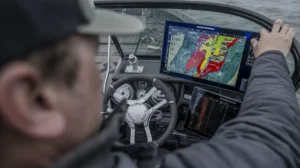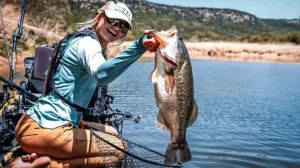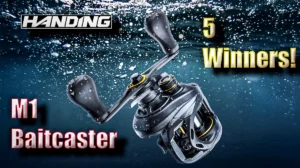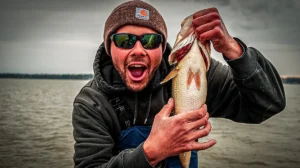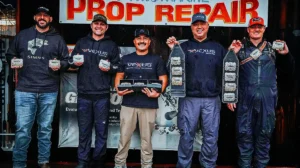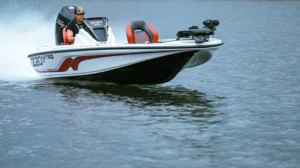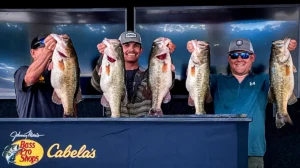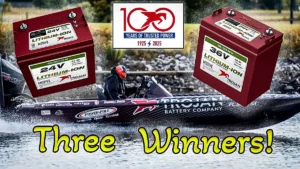To be honest, if there’s one thing I despise doing during the winter, it’s ice fishing. It just isn’t in my blood. For the past few years or so, I’ve been exploring the few Northeast winter fishing options that exist, while avoiding spending a ton of money to go south. From winter steelhead and browns to white perch and even venturing in the salt for codfish, I’ve tried it all. When I lived in Connecticut, there was all this talk about these magical fisheries that kept all the bass anglers busy through the winter; a fishery where 80-fish days were the norm, and your arms hurt after a long day on the water — rod-bending action that would keep any fisherman happy: they were stories about holdover stripers.
It was something that I just had to check out, and when I did, it was an amazing experience; it truly made fishing in the winter so much fun. It became a bite I looked forward to. The more you catch, the more you want to do it again.
The Big Migration and Holdover Stripers
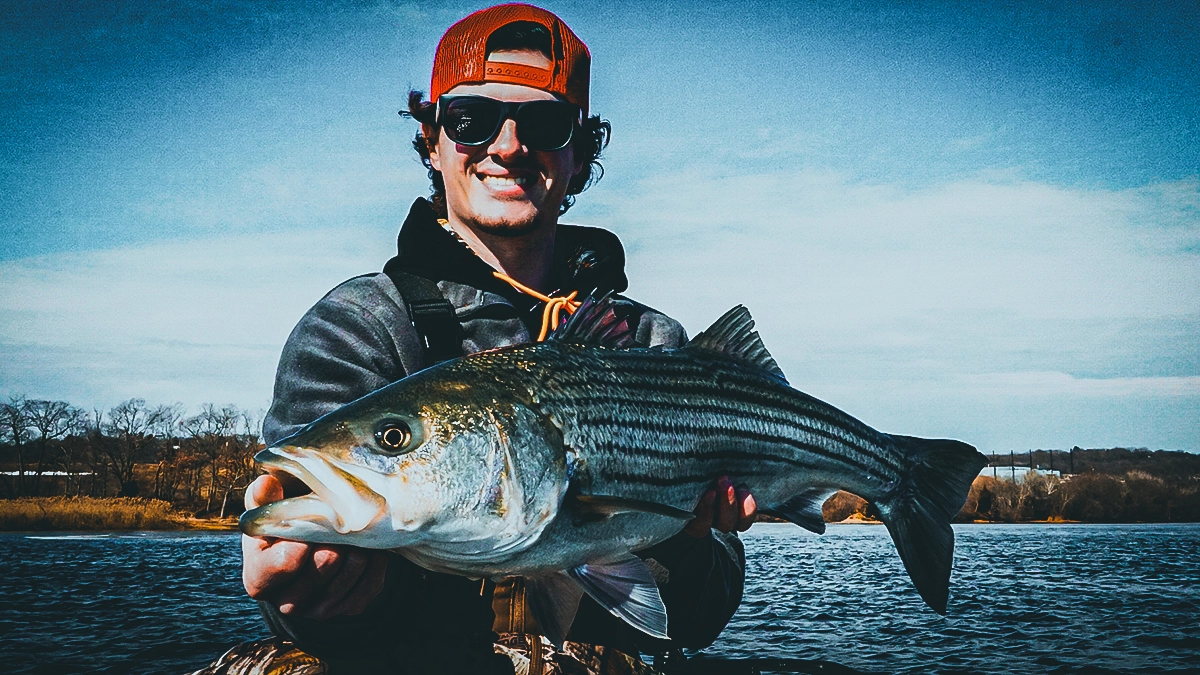
Striped bass are some of the most highly sought after game fish, especially on the East Coast. Anglers travel far and wide to chase these striped beasts. Many love the excellent fight and release them to see another day, but many are happy to have their white flaky meat for the table.
Many stripers along the East Coast make a large migration each year from the southern shores of Virginia, Maryland, and the Carolinas to as far north as Nova Scotia and Newfoundland. Along the way north, in the spring, these striped beasts spawn in many of the large rivers along the way, which include the Potomac, the Delaware, the Hudson, and Connecticut rivers. They are anadromous fish, which means they spend a majority of their life in saltwater, but return to freshwater to spawn.
While most stripers usually continue the migration after spawning, many bass stay in the rivers where the food is plentiful. It is more prominent on the southerly migration that they will “holdover” in these rivers for the winter, searching for warmer water and food. Mostly, it’s large numbers of schoolie-sized fish, but there will be some fish exceeding the 30-pound mark. Surprisingly, most of the bass found in the winters here are males with very few females in the mix.
Tips and Tactics for Fast & Furious Holdover Striper Action
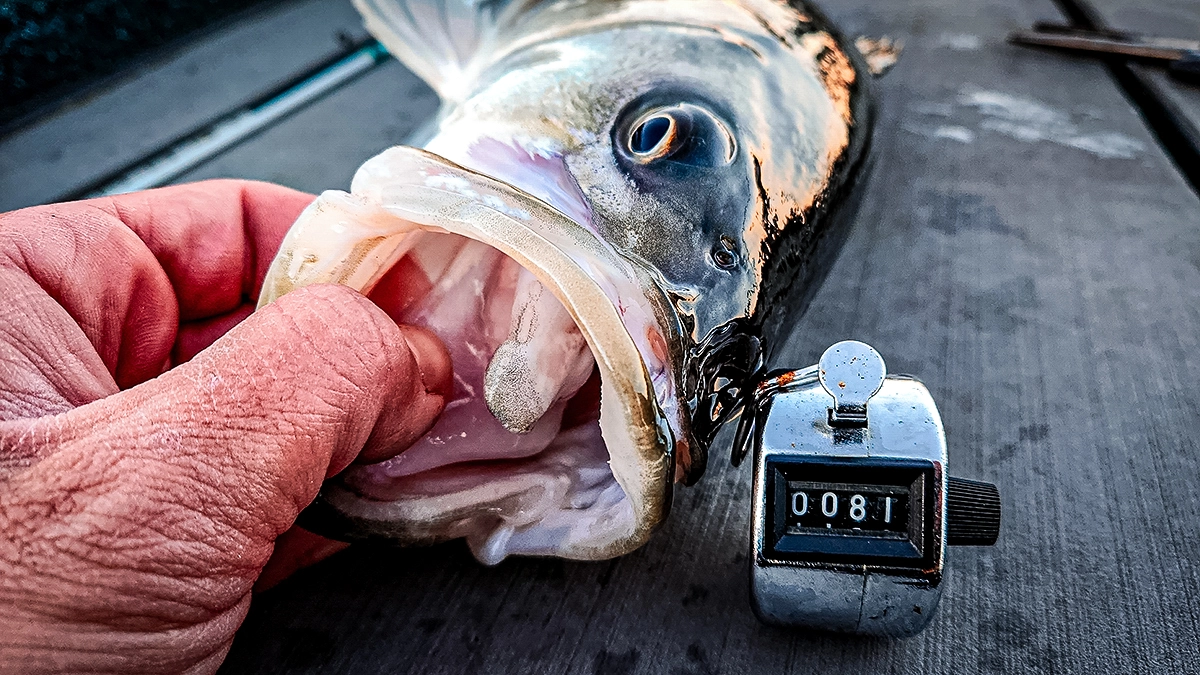
Mid-November is when the striped bass start entering these Atlantic Ocean tributaries along the northern East Coast, and also a bit later, as the bass migrate south. Primarily, they are all chasing a variety of that spring’s hatch of baitfish, the main species being Atlantic Menhaden, otherwise known as bunker or pogys. The bass thrive on these “peanut” sized bunker all fall and winter. It’s one of the main baitfish species that drives the fall run in this part of the country. As you can tell, that is the main baitfish you’re going to want to imitate.
During the early stages of winter, it’s hard to beat an umbrella rig. These fish are chasing bait like no tomorrow especially earlier on in the winter. My go-to umbrella rig is always a Yum Flash Mob Jr. That extra flash in a smaller more compact umbrella rig makes it much easier to make a long cast.
Setting Up the Umbrella Rig
Usually I’ll pair that with all 1/4-ounce jigheads with a stout and a good, strong swimbait. The reason I say strong is because stripers are way more aggressive than your average smallmouth or largemouth. These fish will crush a bait and tear it off as quick as you put it on.
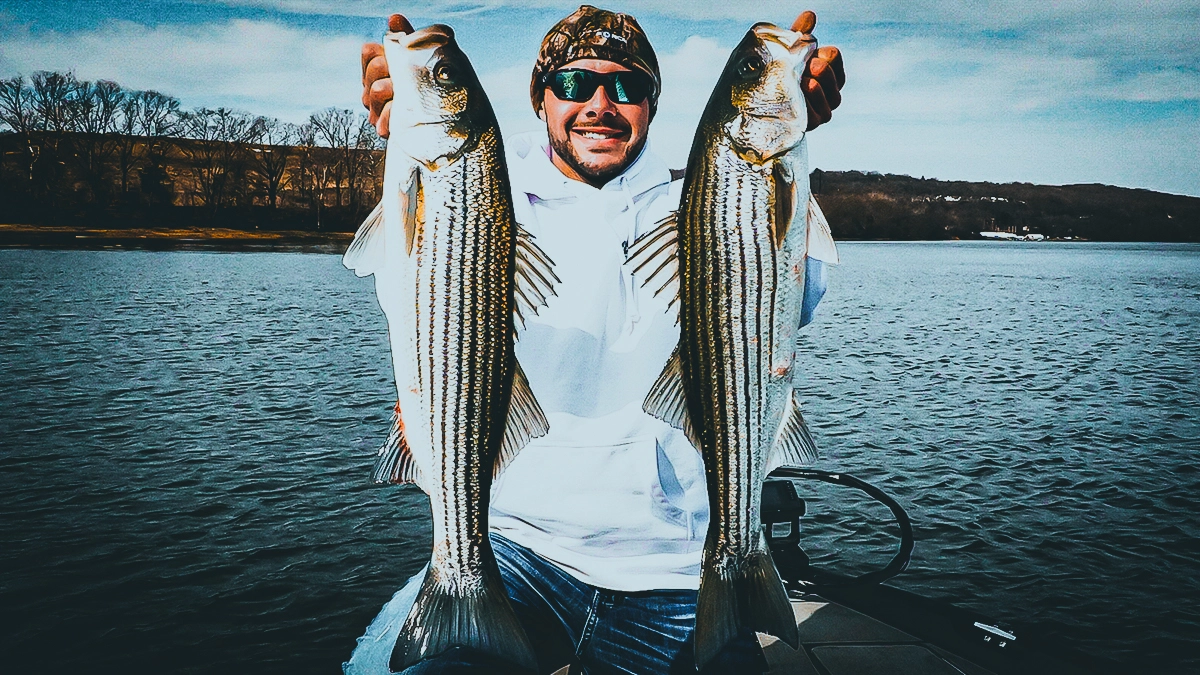
Baits like the No Live Bait Needed Paddle Tail Swimbait or the AA’s Bad Bubba Shad Swimbait are my favorite choices in the 4- and 5-inch sizes. They are strong, durable, and they have broader-shaped bodies that really imitate a peanut bunker exceptionally well. These baits are perfect by themselves or paired on the umbrella rig.
When the water temps drop below 45 degrees, singular baits with less action start to shine. My go-to’s are a Lunker City Fin-S Fish or a Zoom Super Fluke on a 1/2-ounce or a 3/4- to 1-ounce Hopkins Hammered Spoon. Now, I know what you’re thinking, that’s two different style baits at two totally opposite ends of the spectrum — but they each serve a purpose.
These bass tend to hang as tight to the bottom as possible this time of year, stacking on top of each other to stay warm. Watching my forward-facing sonar, I was able to figure out that if you can get a singular fluke-style bait over their heads and drift it down with the current, the stripers would react and come up to eat it. This results in fewer total bites, but the ones you do get, you better hold on tight, cause you’re in for a ride.
A Hopkins comes into play, usually when that water is bone chilling cold to trigger a reaction strike. Letting the bait sink all the way to the bottom after a long cast and snapping up the spoon hard working it back to the boat with the tide or current, whichever is in your favor. Like a blade bait, your bites will be mostly be on the fall.
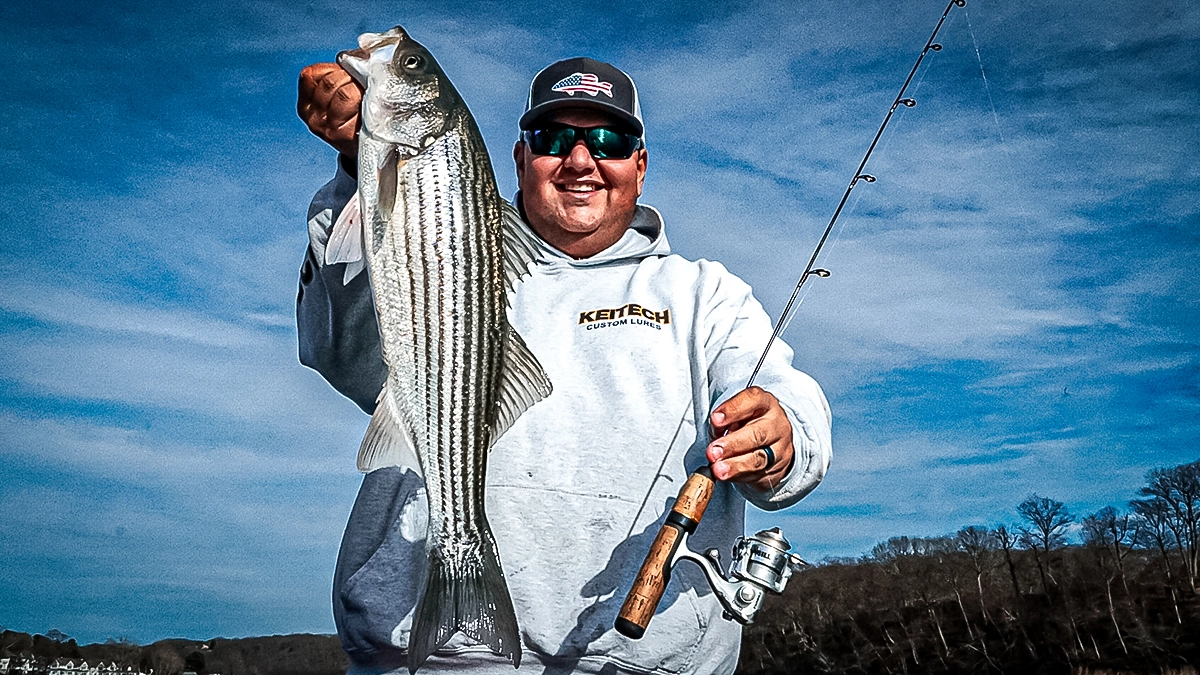
The Right Rod and Reel for Holdover Stripers
When it comes to rod, reel and line selection, it’s a little different for all 3 baits. For an umbrella rig, my go to set up is a Daiwa Tatula 200 reel in a 7.3:1 gear ratio paired on a Dobyns Fury Swimbait Rod in the model 795. That outfit set up with 25 pound Berkley Big Game Monofilament is a deadly setup when it comes to throwing the rig. The rod had the right action and weight to throw that bigger bait a long ways and still maintain a good moderate fast bend to keep those stripers pinned.
For the lighter single swimbaits, single flukes, and spoons, your standard heavier spinning set up will work just fine. Something in that 7-foot, medium action range and a 3000-size spinning reel with 15-pound-test PowerPro Braid will be more than adequate for tangling for these bass. Also who doesn’t love catching striped bass on light spinning outfits.
Where The Striped Devil Lays
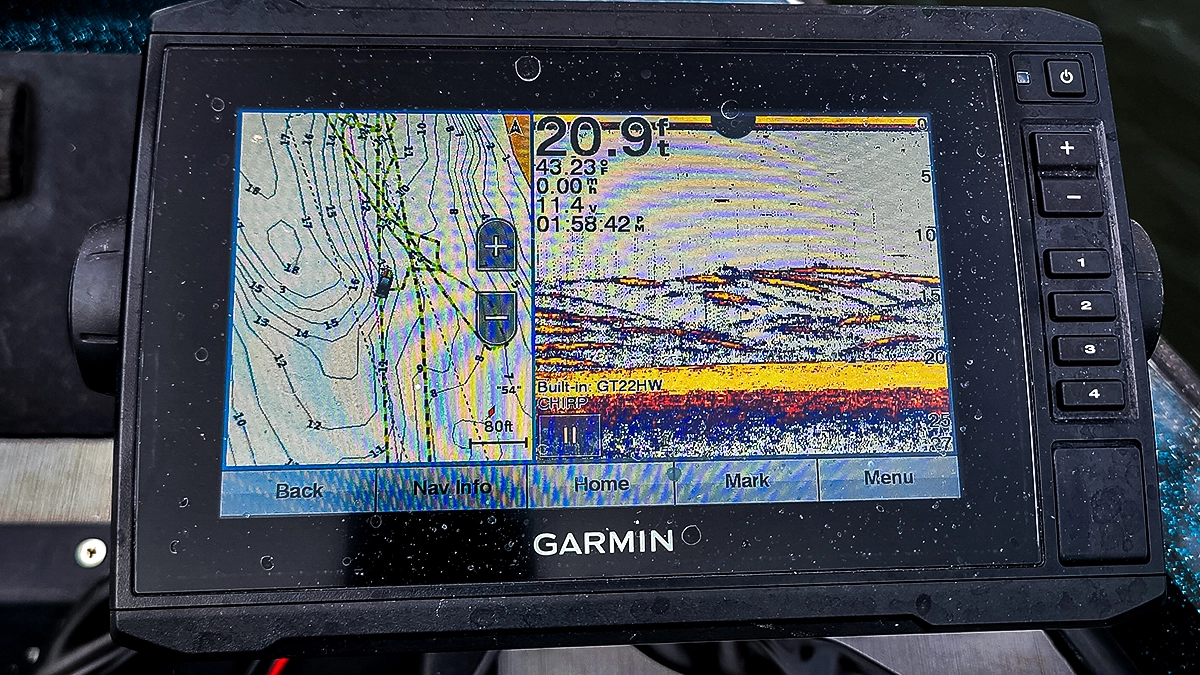
Understanding tide, water temperature, and how these rivers flow is crucial for having triple-digit days of stripers. Following the fish through their seasonal patterns as they rapidly change can be tricky, but with a little help from modern technology, it’s not as daunting as you might think. I rely heavily on my Navionics App on my phone, which gives you up-to-date tide and current charts allowing you to figure out where you are in the tide cycles. It also gives you the contours for your charts at that particular moment in the tide cycles.
Tide changes in saltwater are the biggest player in the stripers’ feeding window, and that couldn’t be more true for these holdover stripers. The first and last 90 minutes of the incoming and outgoing tide will be the best. That’s when the least amount of water is being pulled by the lunar phases and heavy feeding occurs for all species. As the main part of the tide swing hardens, the bite usually slows.

As the water temperatures get colder, the fish move closer to the bottom where it’s usually warmer. This is where you try to find deeper holes in the river. Idling around with 2-D sonar and side imaging, you’ll be able to see the massive schools of bass as they almost look like schools of crappie in southern timber lakes. When you find those schools, anchor up on them as quickly as possible and get the school fired up. Once they get going, it can be non-stop action for hours on end.


